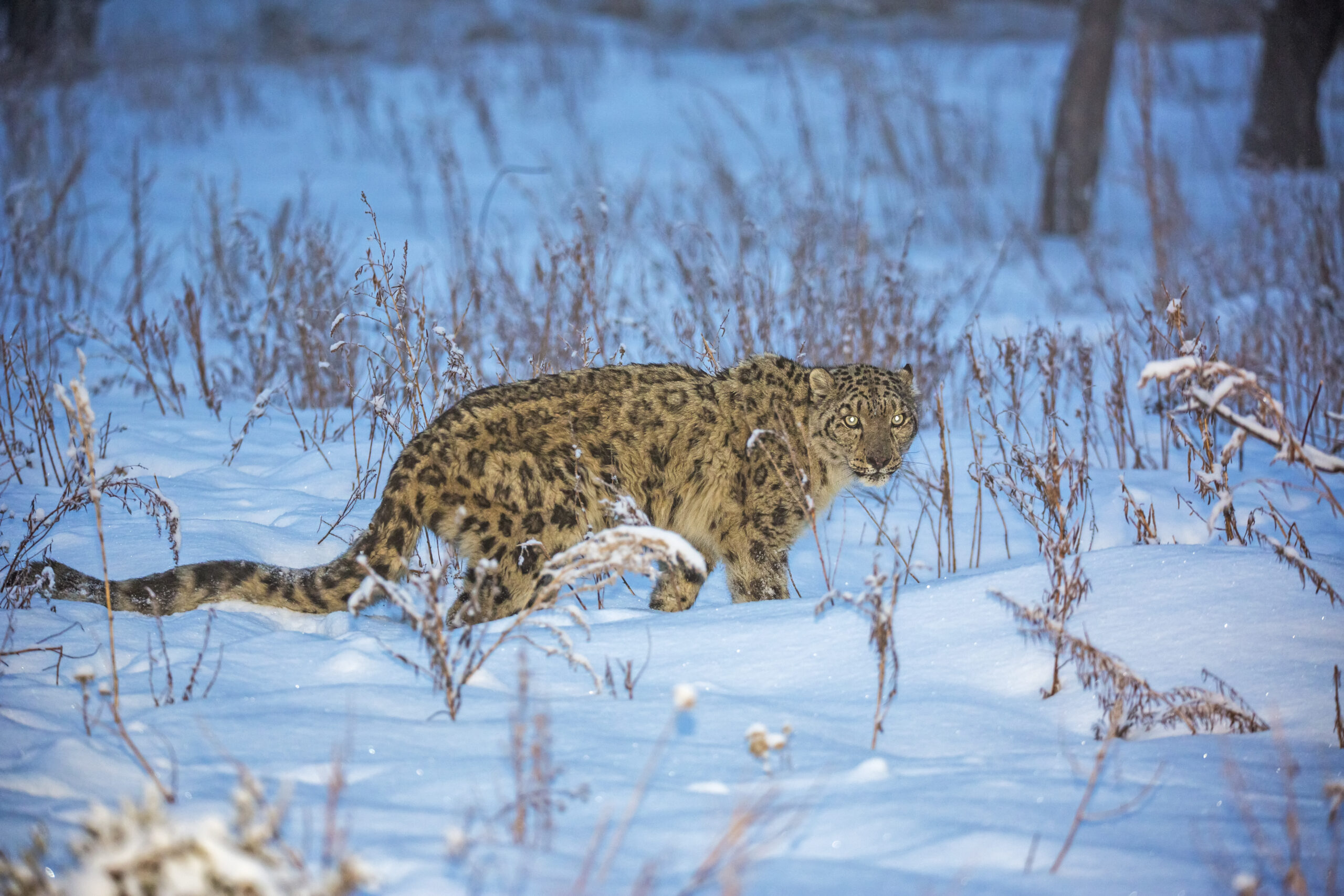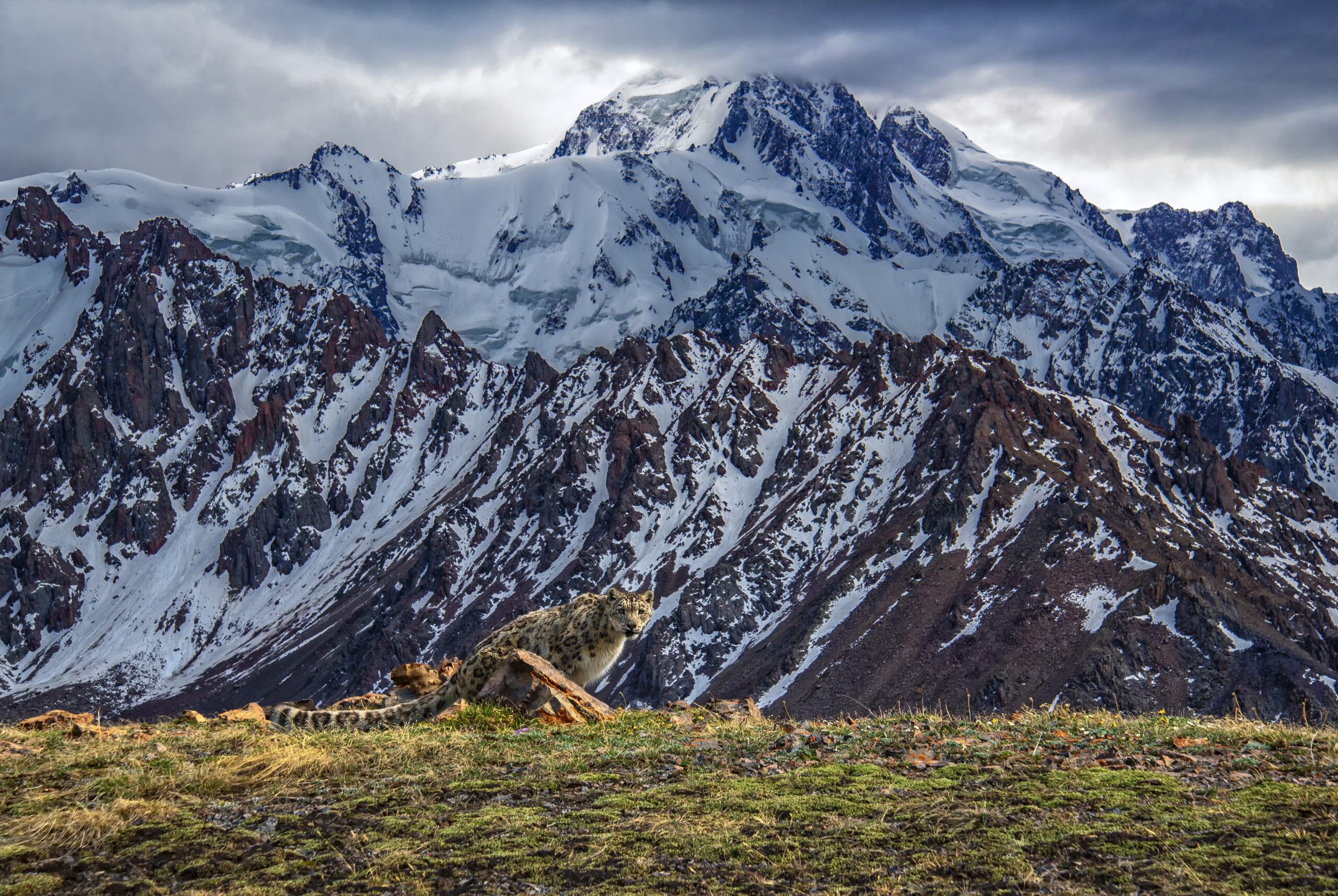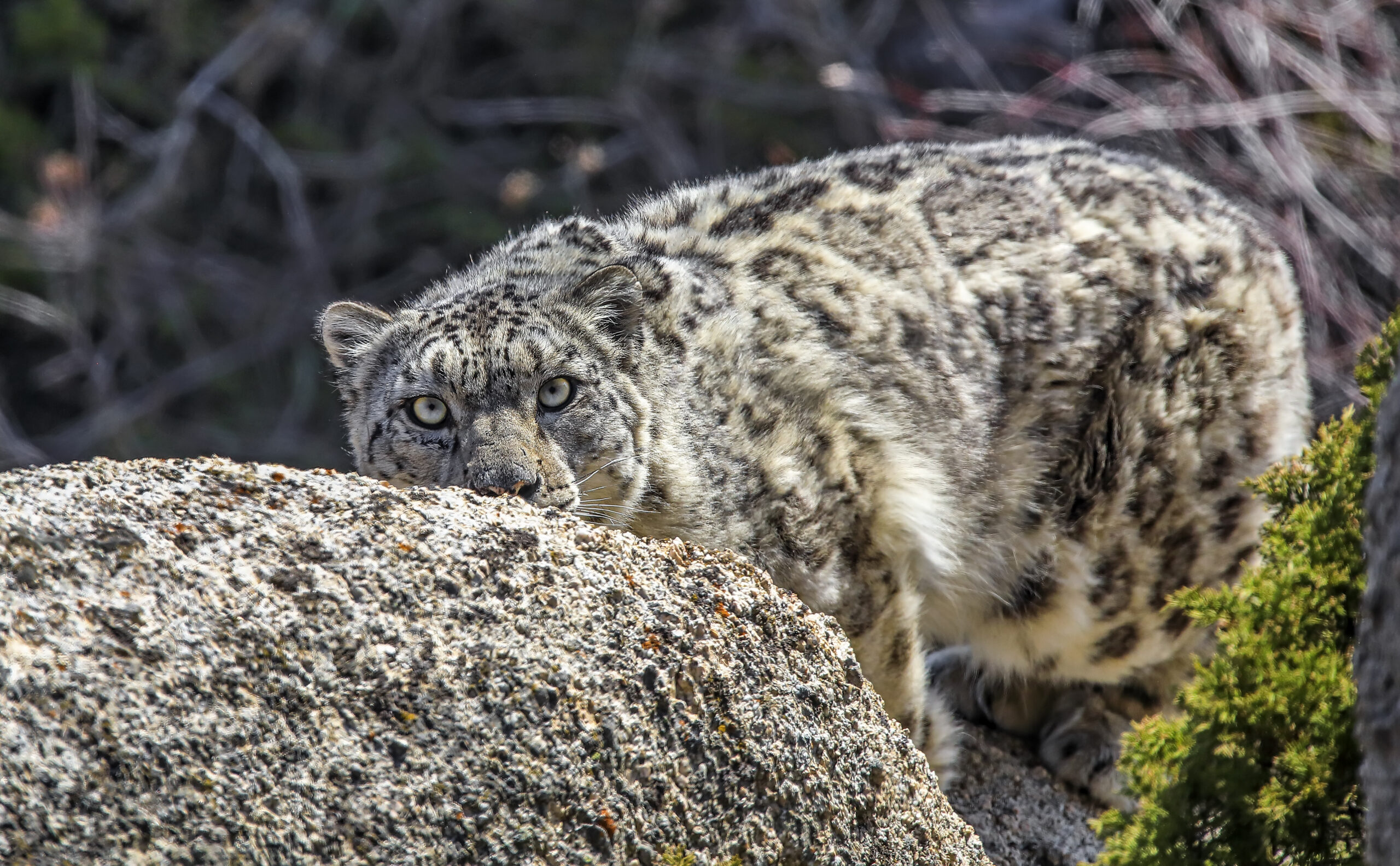ASTANA — The snow leopard, a symbol of the mountains, is one of the rarest and least-studied creatures on Earth. Inhabiting the mountain ecosystems of the Altai, Zhetysu Alatau, Saur, and Tien Shan, these elusive predators face numerous threats. While the population in Kazakhstan has doubled over the past 30 years, challenges such as the expansion of economic activities, climate change, and habitat competition (and disturbance) [AO2] continue to endanger their existence.

Photo credit: UNDP Kazakhstan/Saltore Saparbayev.
Rare large cats inhabit only 12 countries worldwide. The snow leopard is listed in the Red List of the International Union for Conservation of Nature and in the Red Books of the countries where it can be found.
The global count is approximately 6,000 species, with around 2,500 in the mountains of China, 1,000 in Mongolia, 600 in India, 500 in Nepal, over 400 in Pakistan, and 141-183 in Kazakhstan. These unique creatures also live in the mountains of Afghanistan, Bhutan, the Kyrgyz Republic, Russia, Tajikistan, and Uzbekistan.
Conservation efforts
The United Nations Development Programme (UNDP) and the Kazakh Ministry of Ecology and Natural Resources with financial support from the Global Environment Facility launched a project in 2018 to study and preserve the snow leopard in Kazakhstan.

Photo credit: UNDP Kazakhstan/Saltore Saparbayev.
Preserving these majestic creatures is not just about protecting one species; it is about saving biodiversity and keeping ecosystems in balance, which is vital for sustainable development.
In 2018, an international fund named the Snow Leopard Foundation was created. Alongside international organizations and commercial funds, public foundations are engaged in conservation efforts for snow leopards.
Another organization, the Snow Leopard Fund, was established early in 2009. Since then, the organization has accomplished significant work, publishing numerous research papers in the process.
Innovative tracking methods
Kazakh zoologists have successfully applied an innovative method for tracking the movements of snow leopards, moving beyond traditional camera traps. Using satellite telemetry, specialists can now monitor these predators in real time, providing valuable insights into their behavior, migration patterns, and habitats.

Photo credit: UNDP Kazakhstan/Saltore Saparbayev.
“A total of ten snow leopards have been tagged with special satellite transmitters, and we are monitoring their movements. The advantage of using satellite telemetry is that we can track their movements in real time. We know the location of a snow leopard at any given moment, study the areas of its habitats, explore the paths of its migration, and can organize its protection,” said Alexey Grachev, head of the laboratory at the Institute of Zoology.
The collars used in this method are completely eco-friendly and safe. Capture is conducted humanely and safely, an approach practiced in Afghanistan, China, India, Mongolia, Nepal, Pakistan, and Russia. The core of this method lies in culling without direct human involvement, lowering the risk of stress and injury to the animals.
Positive population trends
The use of advanced tracking technology has been crucial in monitoring and ensuring the well-being of the snow leopard population in Kazakhstan. With around 141- 183 individuals in the country, 120 of whom reside in specially protected national parks and reserves, there is a positive trend indicating population growth. The Institute of Zoology has established a cryobank to store the genetic material of snow leopards, enhancing conservation efforts.
“At the Institute of Zoology, a cryobank of the genetic material of the snow leopard has been created. According to our information, there are 11 individuals, both males and females. We have recently learned about new migration routes and the establishment of specially protected areas there. To date, we do not observe any risks of a decrease in population or the overall loss of the species,” said Daniyar Turgambayev, acting chairman of the Forestry and Wildlife Committee at the Kazakh Ministry of Ecology and Natural Resources.
